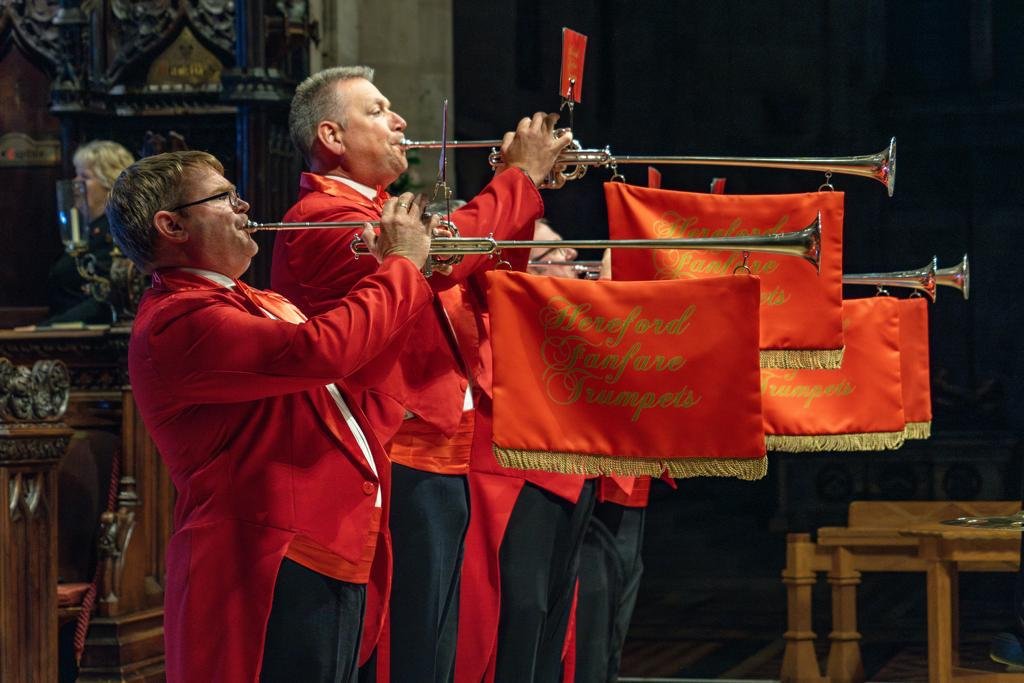Fanfare
noun
A short ceremonial tune or flourish played on brass instruments, typically to introduce something or someone important
Origins
The origins of the trumpet originate around 1500 BC and are likely to have been used well before then. The bronze and silver trumpets from Tutankhamun’s grave in Egypt are typical examples, but bronze lurs from Scandinavia, and metal trumpets from China also date back to this period. In these ancient civilisations, trumpets were used to rouse soldiers before battle. They were admirably suited for this role, as loud blasts cut through the sounds troops made.
European Royalty
Almost all European Royal families had trumpet bands that played music associated with the military. This facet remains in place to this very day, thankfully no longer for warmongering! Historically, these fanfares for important people were usually played by the trumpet players, as the trumpet was associated with royalty. Due to the complexities involved with playing the trumpet, their players were also the best paid of all court musicians.
Medieval times
During medieval times, people of very high status continued to have their own personal groups of trumpeters who would now be preserved to announce their arrival, whether that was at the town/city gates or at an event. Improvements in metalwork preparation and production, and instrument design from the late Middle Ages onwards, led to an increased usefulness of the trumpet as a more mainstream musical instrument. Fanfares have been imitated in art music as early as the 14th century.
16th & 17th Centuries
It was in the sixteenth and seventeenth centuries that the trumpet came to be used more frequently in a musical context. The instrument in use was still the so-called natural trumpet though. A highly skilled player could only produce a series of six or seven ‘natural’ notes, so it clearly had its limitations. The trumpet was not yet the fully functional instrument we know and recognise today.
Fanfare for the common man
As we progress through history, examples of fanfares in famous mainstream music include the fanfare for the Governor's arrival in Beethoven's Fidelio, and in Wagner’s Lohengrin. As technology improved and manufacturing techniques developed around the turn of the 20th century, trumpets became much more adaptable and available. Later well-known fanfares include Aaron Copland's Fanfare For The Common Man (1942), and Igor Stravinsky's Fanfare for a New Theatre (1964).
British Royalty
As one might expect, British Royalty have been heralded by trumpets on every significant occasion throughout history. HM Queen Elizabeth II’s Coronation in 1953 included several fanfares at significant points in the ceremony; her arrival, the point she was formally crowned and her departure, to name but a few.
Her Majesty’s Golden Jubilee Service of Commemoration at St Paul’s Cathedral was played by a team from the Royal Military School of Music featuring Hereford Fanfare Trumpet's founder Colin Hales.
All royal weddings in recent memory have included the pageantry associated with the sound of trumpets. Princess Margaret’s marriage in 1960 was marked by a fanfare composed by the Master of The Queen’s Music, Sir Arthur Bliss. The fanfare at the most recent Royal Wedding, of the Duke and Duchess of Cambridge, was played by a trumpet team from the Royal Air Force.
Style & panache
A Fanfare adds style and panache to any significant event. From birthday parties and weddings to product launches and executive dinners, every occasion will be made extra special with an announcement sounded by trumpets.
To find out more or to discuss your event, please get in touch.

